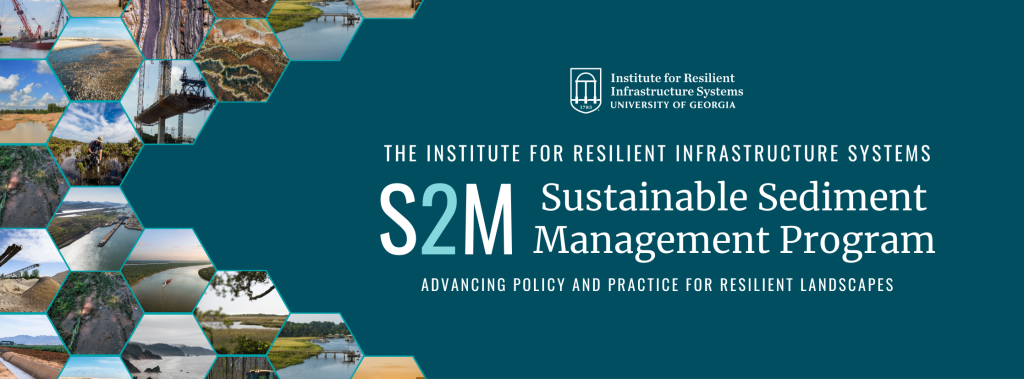
The IRIS Sustainable Sediment Management (S2M) Program was founded to advance policy and practice to expand and diversify the benefits achieved through sediment management, reduce the costs and impacts of sediment management operations, and create resilient riverine and coastal landscapes and infrastructure.

Background
Billions of cubic meters of sediment are dredged annually around the world. In the U.S., approximately 250 million cubic meters of sediment are dredged annually from rivers, estuaries and coasts to support navigation, flood risk management, construction activities, and other purposes. Infrastructure in the form of dams, levees, and other large-scale human interventions have disrupted sediment processes and flows, producing long-term challenges for infrastructure, the environment, and communities.
Lessons learned from past practice, in combination with advances in science and engineering, have provided the ingredients for innovation in sediment management through education, research, demonstration, and full-scale application.
S2M will convene interdisciplinary expertise and experience across sectors to:
1
Support
Support our nation’s focus on beneficial use (BU) of dredged sediment as reflected by the U.S. Army Corps of Engineers’ goal of 70% beneficial use by 2030;
2
Advance
Advance Nature-based Solutions (NbS) implementation to create sustainable infrastructure and more resilient systems;
3
Restore
Restore natural processes and systems to reduce long-term costs and impacts to infrastructure, the environment, and communities;
4
Diversify
Diversify the benefits achieved through infrastructure investment for expanded economic, environmental, and social value.
In winter of 2025-2026, S2M will hold its first series of virtual short courses! Learn more and register here.

Through the combined efforts of its collaborators and partners, the S2M aims to be a leading center of excellence and innovation in sediment management.
Near-term actions being undertaken by S2M include:
1
Strategize
Organizing national expertise on strategic challenges, needs, and innovation;
2
Focus
Focusing applied research on sustainable sediment management and beneficial use of dredged sediment to advance the practice in coordination public and private sector collaborators;
3
Expand
Expanding opportunities for student research in sediment management;
4
Organize
Organizing national and regional events to develop and pursue a strategic vision for future practice and outcomes;
5
Support
Offering professional training activities (short courses, webinars, seminars) in sustainable sediment management, BU, and NbS to support next-generation practice.
For further reading on sediment management:

For examples of beneficial use implementation:
Engineering With Nature Atlas Series (EWN)
State Framework for Regional Sediment Management (NJDOT)
Regional Sediment Management in US Coastal States: Historical Trends and Future Predictions (2024)

For sediment management and beneficial use guidelines and implementation:
International Guidelines on Natural and Nature-Based Features (NNBF) for Flood Risk Management (EWN)
Hurdles to Beneficial Use of Dredged Material: Root Cause Analysis (ERDC)
Regional Sediment Management for USACE
USACE Regional Sediment Management and Engineering With Nature Workshop 2013



